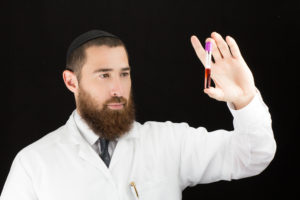 In 2016, President Barack Obama proclaimed May as Jewish American Heritage Month, saying, “For generations since, Jewish Americans, having shared in the struggle for freedom, have been instrumental in ensuring our Nation stays true to the principles enshrined in our founding documents. They have helped bring about enduring progress in every aspect of our society, shaping our country’s character and embodying the values we hold dear. This month, as we pay tribute to their indelible contributions, we recommit to ridding our world of bigotry and injustice and reflect on the extraordinary ways in which Jewish Americans have made our Union more perfect.”
In 2016, President Barack Obama proclaimed May as Jewish American Heritage Month, saying, “For generations since, Jewish Americans, having shared in the struggle for freedom, have been instrumental in ensuring our Nation stays true to the principles enshrined in our founding documents. They have helped bring about enduring progress in every aspect of our society, shaping our country’s character and embodying the values we hold dear. This month, as we pay tribute to their indelible contributions, we recommit to ridding our world of bigotry and injustice and reflect on the extraordinary ways in which Jewish Americans have made our Union more perfect.”
President Trump has not yet issued the proclamation for 2017, but the Jewish American Heritage Month website announced that this year’s theme is “American Jews in Medical Research.” Let’s take a look at the history of Jews in medicine and some important figures who made a difference.
During the Middle Ages, it was rare for Jews to be admitted into medical school in Europe, but Jews were instrumental in translating medical knowledge and information between languages and cultures. If a Jew wanted to learn medicine, it was either through an apprenticeship or self-learning. Catholic popes in the 16th century prohibited Jewish doctors from treating Christians, but many popes still had a personal physician who was Jewish.
It wasn’t until the late 1800s when medical schools began opening their doors to Jews, both men and women. By the 20th century, Jewish physicians outnumbered non-Jewish doctors in Berlin, Vienna and Warsaw. Jewish doctors were not allowed into established specialties, which is why so many flocked to the less prestigious fields of psychiatry, gynecology and immunology.
Dr. Paul Ehrlich, a German Jew who discovered the treatment of syphilis and won a Nobel Prize in Medicine in 1908, was not made a full professor until six years after his award. When Hitler came into power, Dr. Ehrlich’s name was erased from the textbooks until after World War II.
Jews in American Medicine
In the 20th century, American medical schools limited the number of Jews admitted. Some men and women who wanted to study medicine went to Europe. Jewish hospitals accepted the trainees once medical school was completed.
Jonas Salk, most known for his vaccine against polio, attended New York University School of Medicine but went into the field of research. Before he died, he worked on a vaccine for AIDS, but the project was discontinued because he could not secure insurance to protect his organization.
Dr. Aaron Kellner was the visionary of today’s blood banks. He established the New York Blood Center in 1964. In the mid-1980s, he would modernize Israel’s blood bank system. He is known for work in hematology, blood transfusion and donations, and public health.
Gertrude B. Elion, a pioneer in autoimmune disorders, developed chemotherapy for childhood leukemia and an immunosuppressant that makes organ transplantation possible. She shared the 1988 Nobel Prize in Medicine with two men who worked with her to develop new medications. Sadly, the world almost missed her contributions to the field of medicine because she could not obtain a graduate research position.
Henry Judah Heimlich is known for the Heimlich maneuver, but he contributed much more to the medical field. The Heimlich valve drains blood and air out of the chest cavity. It saved hundreds of lives of soldiers during the Vietnam war. If a lung collapses because of a chest wound, it can re-expand once the air and blood is out of the cavity.
Remember the Pioneers
The Jewish community has made many contributions to medicine, not only in the United States, but around the world. Take some time to learn more about these men and women who dedicated their lives to medicine and research to save the lives of others.

